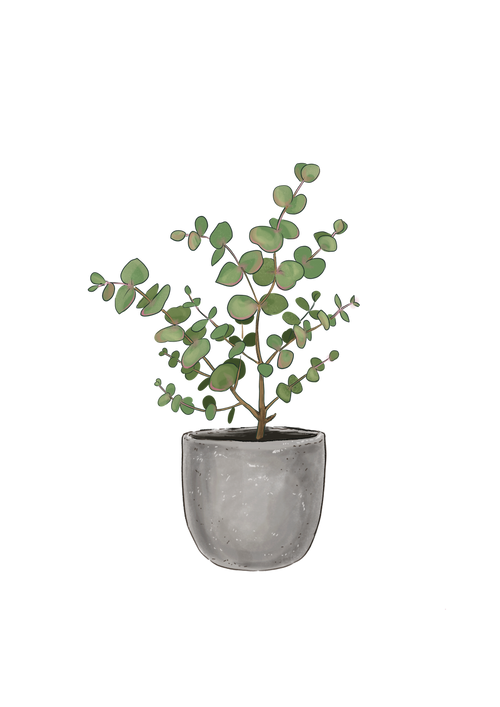Forest Silver Dollar Care Guide

-
Light : High
Plant in full sun (6-8 hours)
-
Water : Medium
Water well when planting and follow our guide on watering perennials, trees, and shrubs here. Keep the soil consistently moist but not soggy during the first year he's trying to get established. Once established, let the soil dry out a bit between waterings. Check the earth each day to ensure your plant doesn't wilt or the leaves start getting crispy and brown if it's hot.
-
Humidity : Medium
This plant doesn't need extra humidity to thrive.
-
Temp : 65℉ - 71℉
This plant likes a cool summers for optimum growth though they can survive hotter temps. If you're in a hotter climate, give it morning sun for 6-8 hours and afternoon shade.
-
Zone : 9|10
This plant can stand temps down to 20°F-30°F for a short time. If growing in a container outside, protect him from winter winds and cold by bringing the container into a heated greenhouse.
-
Fertilizer : Seasonally
Outside:
If growing in the garden bed, give your plant a slow-release organic fertilizer high in nitrogen in the spring.
Scratch the soil's surface between the trunk and drip edge and sprinkle around the plant.
Dust a little compost over the fertilizer and water.
Container:
If growing in a container, use a liquid organic fertilizer high in nitrogen and apply once a month when watering. -
Repotting : Rarely
To transplant into a garden container or the garden bed, water your plant the night before. Dig the hole twice as wide as the grower pot and slightly shorter than the grower pot (not deeper) to raise the crown. Remove the plant and center in the spot. Add rooting hormone around the roots of the plant. Water in the hole and let drain. Add compost to enhance the soil consistency and bring the soil pH to neutral or slightly acidic. Fill around the plant and up to the top of its soil line. Tamp down with your hands to remove any air pockets. Water again around the drip line.
-
Cleaning : As needed
Trim out any dead, damaged or diseased limbs on your shrub when needed. In the spring, you can control the height of the plant or encourage more foliage by trimming back. This plant can. handle heavy pruning.
-
Propagation : Cuttings
When plants grow lots of foliage in the spring, prune a 6-8 inch stem cutting at least two months to a year old. Cut the stem just below a leaf node. Remove leaves on 1/3 of the bottom half of the branch with pruners. (Do not tear off.) Dip the roots' ends and place down to the first leaf intersection in the damp, well-draining, potting soil mix that consists of 3:1 orchid mix and perlite. Tamp down around the stem to secure them. Use a 2-3 inch container with a 5 inch deep base with deep drainage for the roots to grow. Mist a clear plastic bag to create humidity and place the bag over the top of the plantings loosely. There is no need to tie off the bag but allow a little airflow under and into the planting pot. Set it in bright, indirect sunlight while they are rooting. The soil needs to be at 68°F. Check the moisture and humidity each day and add misting to the soil (not the leaves) while the roots establish. After 3-4 weeks, roots will begin to form. You can tug onto the stem to ensure the roots establish after new growth begins. Place the cuttings in the morning sun for a couple of hours each day to harden them off. Increase the time each day and check to ensure the leaves aren't getting sunburnt. Once they have transitioned into the sun, you can transplant them to the garden after the roots are mature.















